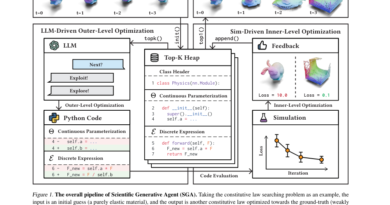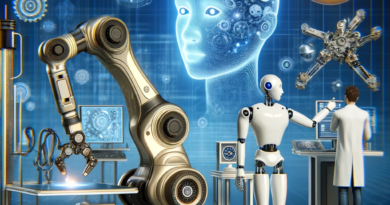Machine Learning Made Simple: A Guide for Beginners
Machine Learning (ML) is a subset of Artificial Intelligence (AI) that allows computers to learn from data and improve their performance over time without being explicitly programmed. If you’re new to this concept, this guide will explain the basics in simple terms.
What is Machine Learning?
Machine Learning is a method of data analysis that automates analytical model building. It uses algorithms that learn from data and make predictions or decisions without human intervention. Essentially, it’s about teaching computers to learn from experience.
Types of Machine Learning
- Supervised Learning: In supervised learning, the algorithm is trained on labeled data. This means that each training example is paired with an output label. The algorithm learns to make predictions based on this labeled data. Common applications include spam detection, sentiment analysis, and predictive analytics.
- Unsupervised Learning: Here, the algorithm is given data without explicit instructions on what to do with it. The algorithm tries to find patterns and relationships in the data. Examples include clustering customers into segments for targeted marketing and anomaly detection in network security.
- Reinforcement Learning: This type of learning is based on a system of rewards and penalties. The algorithm learns by interacting with its environment and receiving feedback. It’s often used in robotics, gaming, and navigation systems.
How Does Machine Learning Work?
Machine Learning involves a series of steps to build and refine models that can make accurate predictions or decisions. Here’s a simplified overview:
- Data Collection: Gather a large dataset relevant to the problem you want to solve.
- Data Preparation: Clean and preprocess the data to ensure it’s in the right format for analysis.
- Choosing a Model: Select the appropriate machine learning algorithm for the task (e.g., regression, classification).
- Training the Model: Use the prepared data to train the model by feeding it examples and adjusting parameters to minimize errors.
- Evaluating the Model: Test the model on new, unseen data to check its accuracy and performance.
- Making Predictions: Once the model is trained and evaluated, it can be used to make predictions on new data.
- Improving the Model: Continuously refine the model by adding more data and fine-tuning the algorithms.
Applications of Machine Learning
Machine Learning is used in various industries to solve complex problems and improve efficiency. Here are some common applications:
- Healthcare: Predicting disease outbreaks, personalizing treatment plans, and analyzing medical images.
- Finance: Detecting fraudulent transactions, managing investment portfolios, and assessing credit risk.
- Retail: Recommending products, optimizing supply chains, and analyzing customer sentiment.
- Transportation: Enhancing self-driving car technologies, predicting traffic patterns, and optimizing logistics.
- Entertainment: Powering recommendation engines for movies, music, and other content.
Benefits of Machine Learning
- Efficiency: Automates complex tasks, saving time and resources.
- Accuracy: Provides more accurate predictions and decisions by learning from data.
- Scalability: Can handle large volumes of data and scale to meet growing demands.
- Adaptability: Continuously improves over time by learning from new data and experiences.
Challenges and Concerns
Despite its benefits, Machine Learning also presents challenges:
- Data Quality: The accuracy of ML models depends on the quality of the data.
- Bias and Fairness: ML models can inherit biases from the data they are trained on, leading to unfair outcomes.
- Privacy: Handling large amounts of data raises concerns about user privacy and data security.
- Complexity: Developing and maintaining ML models requires specialized skills and knowledge.
The Future of Machine Learning
Machine Learning is a rapidly evolving field with immense potential. Future advancements may lead to more powerful and efficient algorithms, better handling of biases, and broader applications across various industries. Staying informed about these developments will help us leverage the full potential of Machine Learning.
Conclusion
Machine Learning is a powerful tool that enables computers to learn from data and improve over time. By understanding its basics, types, and applications, we can better appreciate its impact and potential. As Machine Learning continues to evolve, staying informed about its developments will help us navigate its challenges and opportunities.
Don’t forget to follow us on LinkedIn. Do join our active AI community on Discord.
Explore 3600+ latest AI tools at AI Toolhouse 🚀.
If you like our work, you will love our Newsletter 📰




